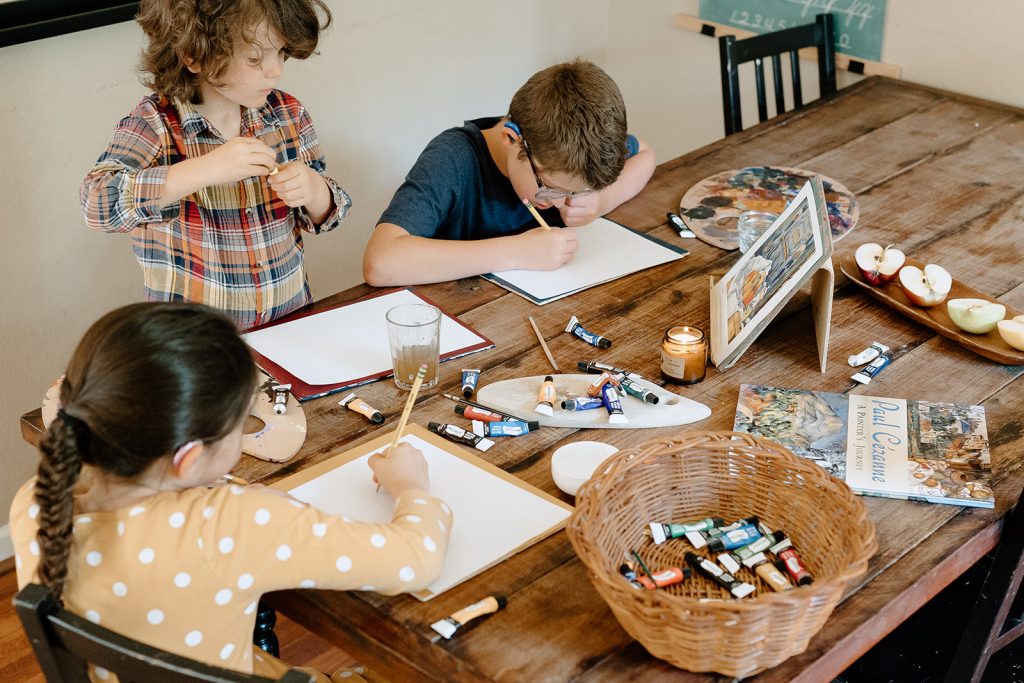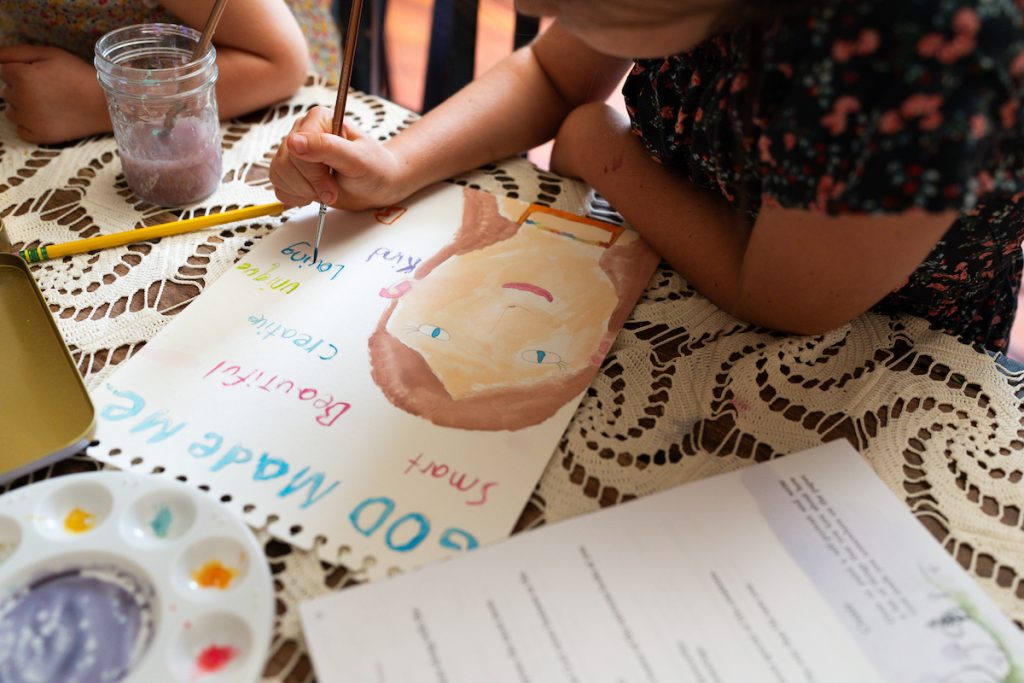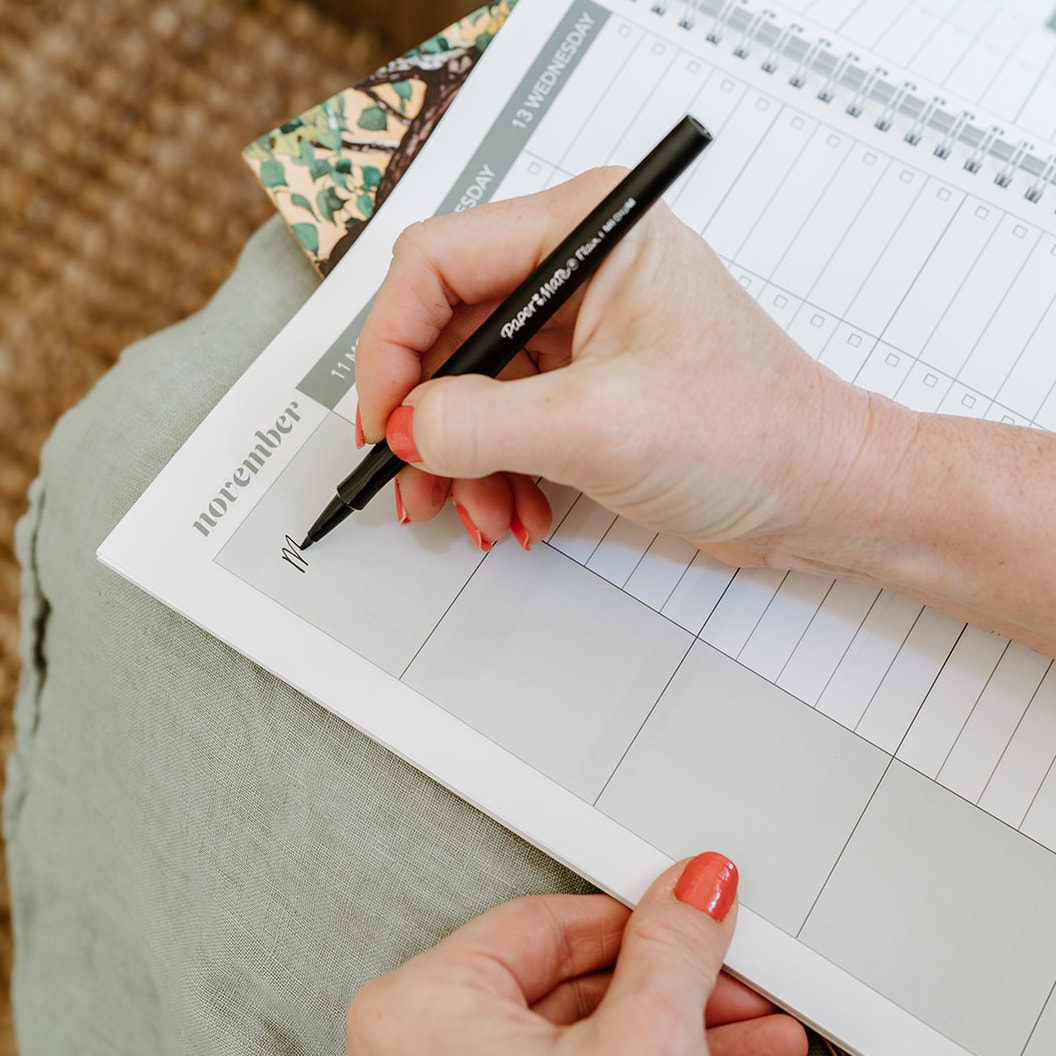Notebooking is a practice I have used in my homeschool for many years along with other Charlotte Mason learning methods like poetry, picture study, and copywork.
I am excited to get into notebooking with Brittany Smith from The Smitty Fam. Brittany is a home educator based in southern New Jersey with her husband and four children. She is passionate about home education and sharing that journey with other families on her blog and on Instagram (@thesmittyfamgram).
In this blog post, Brittany shares all about the practice of notebooking and how to practice in your homeschool. She gets into what notebooking is, how to get started, and examples from her own homeschool. I have loved following Brittany’s journey over the years and hope you enjoy learning how her family uses notebooking in their homeschool.
In this blog post:
- What is notebooking?
- What does notebooking look like?
- Examples of Treehouse Schoolhouse notebooking pages
- Best supplies for notebooking (Supply list and inspiration resources)
- Favorite notebooking curriculum choices from Treehouse Schoolhouse
What is notebooking?

Notebooking is a homeschool concept that incorporates many Charlotte Mason-inspired principles. It serves as a written record of a child’s studies – their knowing and telling – making meaning of what they have learned. Notebooking crosses over a multitude of subjects, such as Language Arts, Math, Nature/Science, Bible, and History. It provides a vacant space to be filled with a child’s thoughts, interpretations, diagrams, and descriptions, or in homeschool terms, a written “narration” of concepts a child is learning about. Notebooking is a beautiful way for your child to pour their understanding onto paper, penning concepts in written and drawn form, greeting narration-style skills with their creativity.
Notebooking is a highly versatile approach in education, serving as an alternative to formal testing while highlighting every child’s unique perspective and artistic interpretation. If homeschooling multiple children, notebooking proves to be an efficient means for various age levels to study the same concept at once, as they each fulfill their own understanding and creative record.
This post dives into notebooking in various Treehouse Schoolhouse curricula and the process of creating a subject-based notebook as an element of your homeschool. Many of these elements and ideas can be implemented in additional core subject areas, as well.
What does notebooking look like?

A notebook will look different from child to child, and it does not need to be fancy by any means. In essence, it will consist of blank pages of paper (we will go over paper styles in a bit) with an illustration, title, and written words. Notebooks can be loose-leaf sheets, pre-made spiral art pads, or art paper that you can slip into a binder, folder, or later have bound.
Artwork in notebooking
For younger students, a notebook might have pasted clipart and printed outlines to color in. They might enjoy child-friendly video tutorials that showcase step-by-step illustration instructions that pair with the theme they are studying. Older students might seek inspiration from nature guides, picture studies, illustrations from books they have read, or images etched in their minds from their nature explorations.
Writing in notebooking
If your child is in the early writing stage, it’s a great idea to have them orally narrate what they have learned. You can help them construct complete thoughts and write the sentences out for them in pencil. If they would like to “write,” you can have them trace the sentences you have penciled with a thin Sharpie marker or pen, later erasing any pencil marks; or, you can write their ideas on a separate piece of paper or dry-erase board for them to copy on the page themselves. Older students might also decide to write paragraphs, first in pencil, so there is an opportunity for proofreading. If desired, they may type their narrations and paste the excerpts onto their notebook page.
Including details in notebooking
After the artwork and writing are both done, outlining is a great idea. Your child can use colored markers for the title, and a permanent marker for illustration outlines, sentences, and diagram labels. Then, all pencil lines can be erased for a neater finish. At the discretion of your child, they might also decide to choose a watercolor wash to paint over their notebook page. They will want to use a light, watered-down pigment to make their sheet stand out without affecting the visibility of their art and writing.
How to store and organize notebooking pages
You can store your child’s notebook page in several ways. If using loose-leaf sheets, a binder with page protectors or laminating each sheet can preserve the longevity of their work. Though not necessary, taking their sheets to a printer to add a spiral binding can finish off their work, too. Either way, adding a cover page with the subject/season/year, along with a relevant cover image and their name will turn their completed work into a beautiful keepsake and permanent portfolio of their learning.
Examples of Treehouse Schoolhouse notebooking pages

Moon Week from Treehouse Nature Study: Autumn

Total Solar Eclipse Unit Study

Stars Week from Treehouse Nature Study: Autumn

Stars Week from Treehouse Nature Study: Autumn

Seeds and Sprouts Week from Treehouse Nature Study: Spring

Coniferous Trees Week from Treehouse Nature Study: Winter

Winter Birds Week from Treehouse Nature Study: Winter

Birds of Prey Week from Treehouse Nature Study: Autumn
Best supplies for notebooking

Notebooking doesn’t require much. You probably already have most items on hand. You can prepare your learning space with the following materials to be sure items that your child might need will already be accessible. Visit Amazon for a complete list of notebooking supply favorites.
Notebooking supply list
- Blank paper – Cardstock or multimedia paper is suggested with the use of colored pencils, crayons, or markers. If using paint or adding a watercolor wash, watercolor paper works wonderfully. You could also use a generic lined notebook and paste the child’s illustrations directly on each page.
- Art medium – Access to different mediums, such as crayons, markers, and watercolors offer a variety for your children to choose from. You can gather basic brands you might already have at home or purchase more professional brands depending on age, skill, or personal preference.
- Basic supplies – Pencils, erasers, glue, scissors, and a thin Sharpie marker are best to have readily available during notebooking sessions.
- Storage items – A 3 ring binder with page protectors, a laminator and laminating sheets, or a standard folder all work great.
Illustration inspiration
- Art Hub For Kids (YouTube)
- Watercolor in Nature by Rosalie Haizlett
- Draw Write Nowseries by Marie Hablitzel and Kim Stitzer
- Trace and Paint Nature by Nicki Traikos
Learning more about narration and nature journaling
- Know and Tell: The Art of Narration by Karen Glass
- Narration Retelling: Charlotte Mason’s Living Method of Learning by Shannon Whiteside
- How to Teach Nature Journaling by John Muir Laws and Emilie Lygren
Favorite notebooking curriculum choices from Treehouse Schoolhouse
Treehouse Schoolhouse incorporates notebooking into each of its core curriculum studies. Children using Treehouse Nature Study will complete weekly notebook pages showcasing what they have learned about various seasonal topics, such as snails, trees, backyard birds, and more. In Rooted Family Bible Curriculum, they are invited to write about their self-identity with Christ. In An Expectant Easter and A Connected Christmas, there are opportunities to notebook through the many Bible passages you will read together.
Each of the curricula’s parent guides provides an overview of notebooking with a simple step-by-step and core materials needed. We will go through the steps in this blog, too. Your weekly overview grid will also indicate which days to work on their notebooks, helping to break the tasks up throughout their study. For example, one day your child might focus on their art and labeling and the writing portion later in the week.
Treehouse Nature Study

Treehouse Nature Study, Primary Years is a seasonal nature study curriculum designed with family-style learning in mind. It is a gentle guide meant to invite various ages to connect with each other and the world around them through living books, nature notebooking, hands-on projects, and beauty subjects such as poetry, picture study, and folk songs.
From preschool through upper middle school, it appeals to every age and is easily used with multiple ages at the same time.
Rooted Family Bible Curriculum

Rooted Family Bible Curriculum is an 18-week family Bible curriculum. Each week centers around one declaration statement related to the themes of Identity, Devotion, and Wisdom. Rooted incorporates beauty subjects with Bible study including daily Scripture readings, discussion and prayer prompts, hymns, poetry, and art study.
Treehouse Book Studies

Treehouse Book Studies are digital download book studies of children’s literature for ages 5-13. Use in your homeschool as literature curriculum or as book study with a small group. Create lasting connections through rich stories while you study themes such as science, nature, geography, history, and language arts. Each download includes: Book Study with weekly lesson plans, recipes, Book Report Template, Extension Book List, Multimedia Reference Materials links, and Book Club Meet-up Guide.
Do you use notebooking in your homeschool? Share your experience in the comments below.



![Why Kids Should Still Read Fairy Tales Today [Free Booklist]](https://storage.googleapis.com/treehouse-schoolhouse-media-dev/8901dcb1-img_6905.jpg)